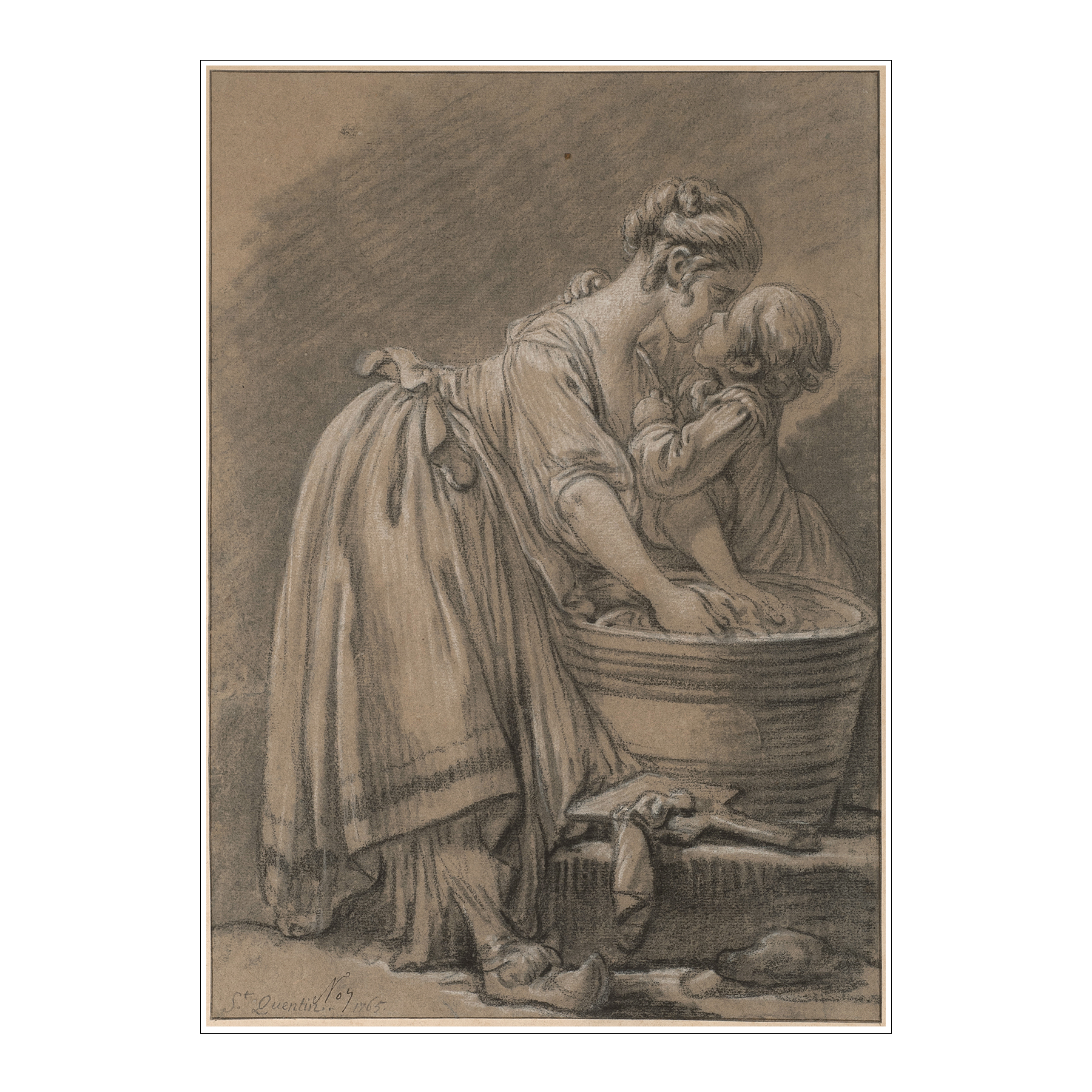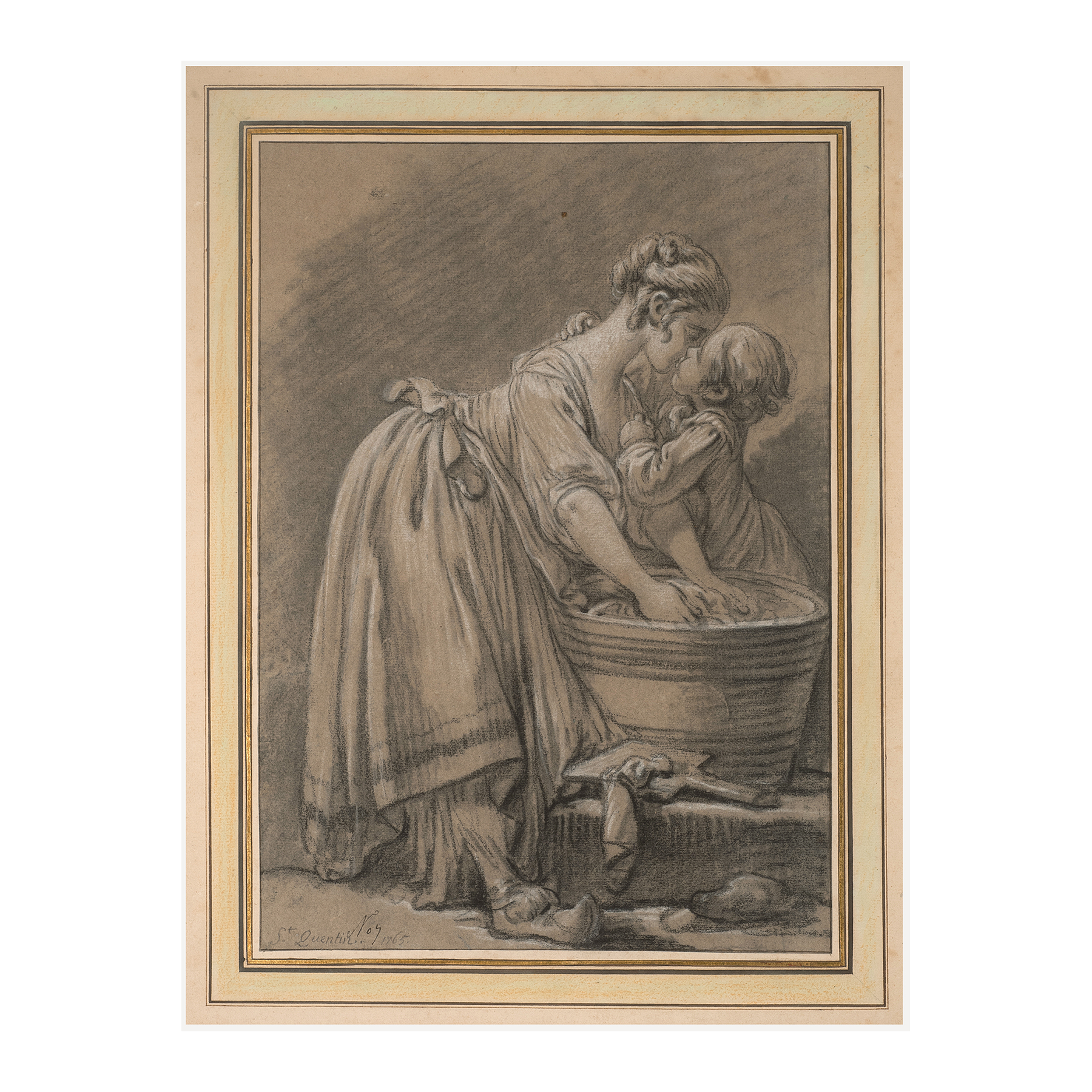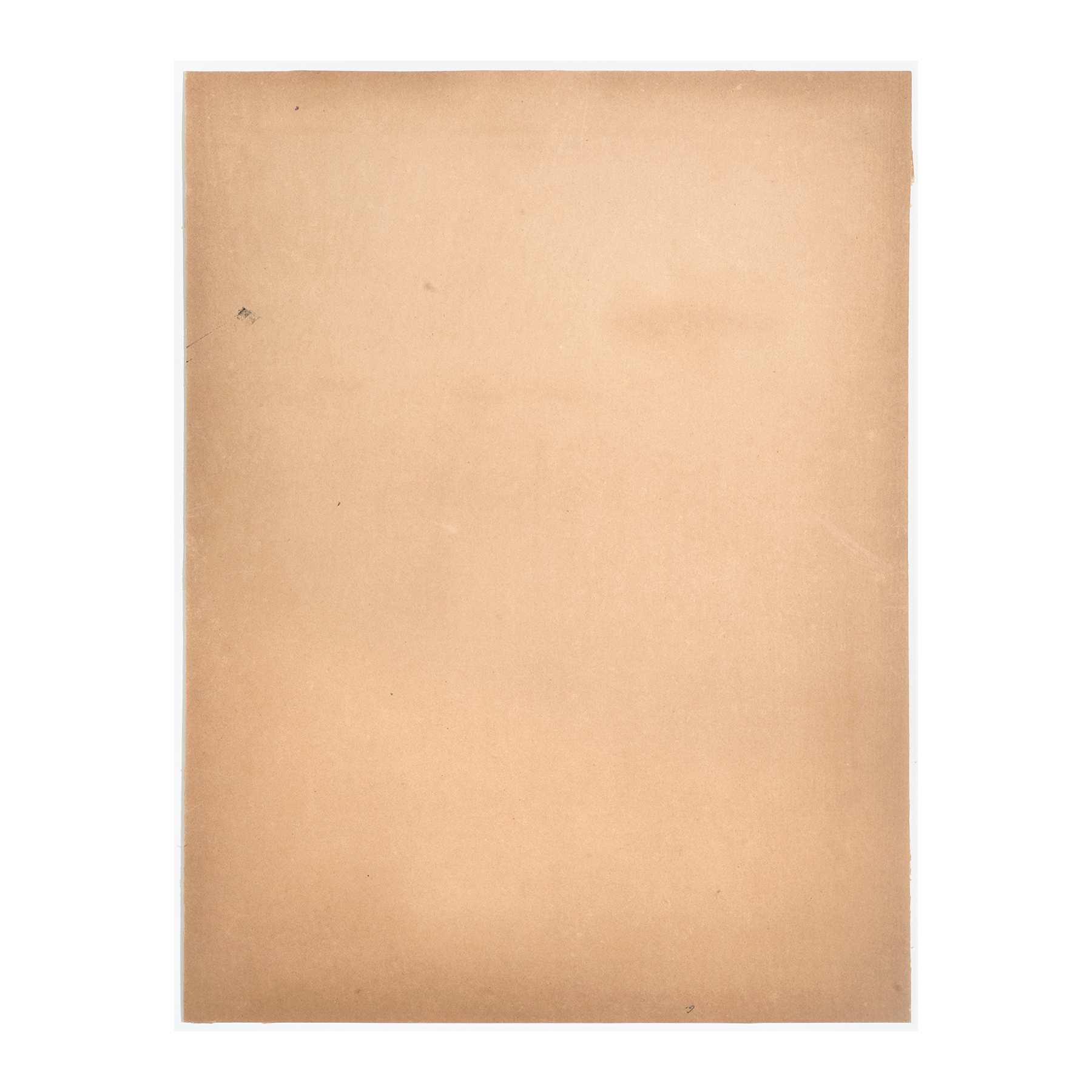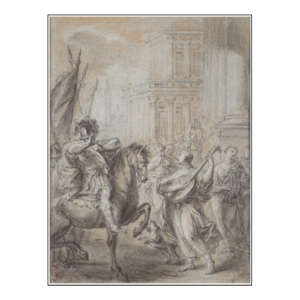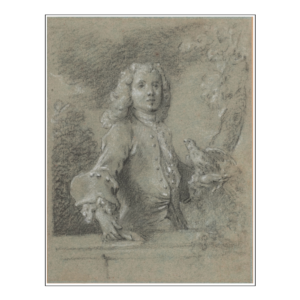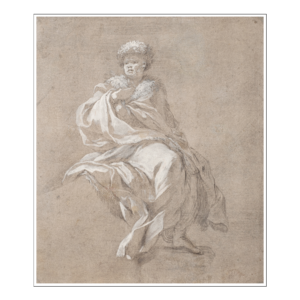Jacques Philippe Joseph de Saint Quentin
Paris ? 1738 – Paris 1780
A young washerwoman kissed by a child
Black chalk and stumping, heightened with white chalk on beige paper. Signed and dated St Quentin 1765 and numbered N°7 lower left. In a 19th-century mount.
365 x 258 mm – 14 3/8 x 10 3/16 in.
Provenance : Anonymous sale, Hôtel Drouot, Paris, 25 October 1991, lot 133; anonymous sale, Hôtel Drouot, Paris, 1stDecember 2008, lot 177; Christie’s, Paris, Une collection française : passion partagée d’un couple d’amateurs, 22 March 2017, lot 122.
This beautiful drawing by one of François Boucher’s main collaborators bears testimony of the master’s influence over his pupils. A student in the Académie Royale de Peinture et de Sculpture, Saint-Quentin was awarded several prizes (second prize in 1757, first prize in 1760) before winning the Grand Prix in 1762 with his painting The Death of Socrates (Paris, École Nationale Supérieure des Beaux-Arts). The École Royale des Élèves Protégés, where he continued to distinguish himself, provided him with a complement of education before he was officially authorized to travel to Rome in September 1765. He studied at the Académie de France in Rome from the end of 1765 to 1769, under Charles Natoire’s directorship.
After his return to France, he seems to have joined François Boucher’s studio; only after his master’s death did he settle independently. In 1776, he was part of the exhibition which was held at the Colysée, a place of leisure built on the Champs-Élysées from 1771 to 1778. TheView of the Place Louis XV, nowadays in the Besançon Musée d’Art et d’Archéologie, was shown at this occasion. Saint-Quentin also produced numerous books illustrations, such as those for La Folle Journée, ou le Mariage de Figaro by Beaumarchais.
This lovely drawing was executed before the artist travelled to Rome, while he was still a pupil of the École Royale des Élèves Protégés. It shows how skillfully Saint-Quentin was able to use what he had learnt from François Boucher in terms of technique and subject. The sheet is signed, like most of his drawings, which probably indicates that it was meant to be sold to an audience who could maybe not afford one of Boucher’s works and was therefore satisfied with a beautiful work by one of his best pupils.
Condition report – Good overall condition. Laid down on the 19th-century mount. A small stain in the center of the upper part. Slightly rubbed.
